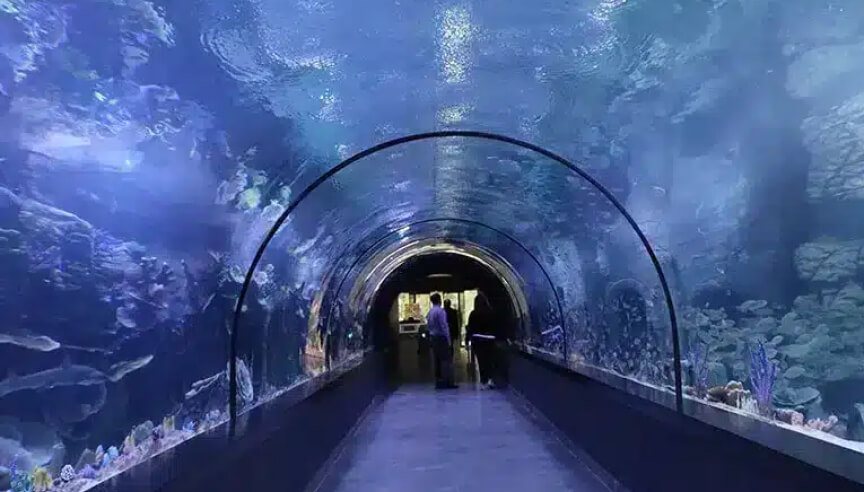Recent Posts
The Largest Aquariums in the Middle East

Exploring the Magnificence: The Largest Aquariums in the Middle East
The Middle East, known for its rich history, vibrant culture, and stunning landscapes, is also home to some of the most impressive aquariums in the world. These aquatic wonders not only showcase a diverse array of marine life but also serve as educational hubs and entertainment destinations for locals and tourists alike. Let’s dive into the depths of the Middle East’s largest aquariums and discover the fascinating marine ecosystems they harbor.
The Dubai Aquarium and Underwater Zoo, UAE
Located within the iconic Dubai Mall, the Dubai Aquarium and Underwater Zoo reigns as one of the largest suspended aquariums in the world. Spanning an impressive 10 million liters of water, this aquatic marvel is home to over 33,000 aquatic animals representing more than 140 species. Visitors can marvel at the massive acrylic viewing panel that offers panoramic views of the diverse marine life, including sharks, rays, and schools of colorful fish. The Underwater Zoo complements the aquarium experience with immersive exhibits showcasing unique species such as piranhas, otters, and penguins.The Lost Chambers Aquarium, Atlantis The Palm, UAE
Nestled within the luxurious Atlantis The Palm resort on the Palm Jumeirah island in Dubai, The Lost Chambers Aquarium transports visitors to the mythical city of Atlantis. This awe-inspiring aquarium boasts over 65,000 marine animals inhabiting ten mesmerizing chambers designed to evoke the ancient ruins of Atlantis. From majestic manta rays and graceful seahorses to enigmatic jellyfish and playful dolphins, the Lost Chambers offers a captivating glimpse into the wonders of the underwater world.The National Aquarium, Abu Dhabi, UAE
As part of the ambitious Al Qana waterfront development project, the National Aquarium in Abu Dhabi is set to become one of the largest aquariums in the Middle East upon its completion. With a focus on conservation and education, this state-of-the-art facility will feature immersive exhibits showcasing the rich marine biodiversity of the Arabian Gulf and beyond. Visitors can look forward to encountering a diverse range of marine species, including reef sharks, sea turtles, and colorful coral reefs, while learning about the importance of preserving aquatic ecosystems.The King Abdullah Aquarium, Saudi Arabia
Situated in the coastal city of Jeddah, the King Abdullah Aquarium is a spectacular marine attraction housed within the King Abdullah University of Science and Technology (KAUST) campus. Spanning an area of over 6,000 square meters, this cutting-edge facility showcases the unique marine environments of the Red Sea, home to an abundance of coral reefs, tropical fish, and marine mammals. With its focus on research, conservation, and public engagement, the King Abdullah Aquarium offers visitors an immersive journey through the wonders of the Red Sea’s underwater realm.The Qatar National Aquarium, Qatar
Set to open its doors in the vibrant city of Doha, the Qatar National Aquarium promises to be a world-class marine conservation and research facility. Spanning an area of over 13,000 square meters, this ambitious project will feature immersive exhibits showcasing the diverse marine ecosystems found in the Arabian Gulf and the wider Indo-Pacific region. From vibrant coral reefs and exotic fish to mesmerizing jellyfish and graceful sea turtles, the Qatar National Aquarium aims to inspire visitors to appreciate and protect the precious marine heritage of the region.
From the shimmering waters of Dubai to the pristine shores of Qatar, the Middle East is home to some of the largest and most spectacular aquariums in the world. These aquatic wonders not only offer visitors a glimpse into the mesmerizing beauty of the underwater world but also play a vital role in conservation, education, and research. As these visionary projects continue to evolve and expand, they serve as beacons of hope for the future of marine conservation in the Middle East and beyond.
